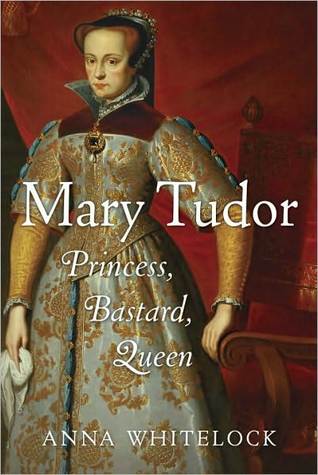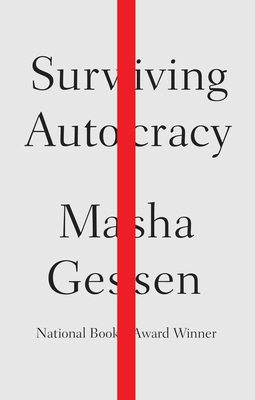Rebranding England's First Queen
Foxe’s account would shape the popular narrative of Mary's reign for the next four hundred and fifty years. Generations of schoolchildren would grow up knowing the first queen of England only as “Bloody Mary,” a Catholic tyrant who sent nearly three hundred Protestants to their deaths…
The central goal of Anna Whitelock’s biography of Mary I is to show that England’s first queen was “groundbreaking” and not “the ‘grotesque caricature’ that is ‘Bloody Mary’.”
Whitelock writes, “Mary’s very accession was against the odds and is a too commonly overlooked achievement the scale of which is rarely acknowledged.” This was the part of Mary’s story that captured my attention. I wanted to know how she went from princess to bastard to queen. As someone who is very interested in Tudor history, particularly the Anne Boleyn saga, I wanted to know more about Mary, who played a supporting character in Anne's story. How did Mary feel during the parent’s divorce? What happened to her after Anne Boleyn’s death? All I knew about Mary was that she had been cast aside and taken out of the succession by her father when he married Anne Boleyn and that somehow she still managed to become queen.
For anyone, like me, interested in taking a deeper look at Mary, Whitelock’s biography is a good overview. The book is divided into four sections that follow Mary’s life phases as a king’s daughter, a king’s sister, a queen, and a king’s wife. Whitelock stays focused on presenting the main events of Mary’s life without getting too much into the weeds with unnecessary detail. I appreciated the brevity of Whitelock’s writing style. I’ve found many historical biographies so dense as to be unreadable for an inpatient reader like me.
Mary Tudor, born in 1516, was the only surviving child of King Henry VIII and his first wife (of six) Katherine of Aragon. The fact that the young princess did not have any siblings born of her mother, particularly a brother, would have an immense impact on her entire life.
Despite the fact that she was a girl, Henry VIII reluctantly groomed her as his heir apparent to the throne. While Mary lived the life of a young princess, receiving all the requisite training and education to one day become queen, Henry grappled with his growing obsessions for a male heir and with obtaining a divorce from Katherine so he could marry his mistress, Anne Boleyn. Anne served as Henry’s solution to Katherine’s inability to deliver him a son.
Once Henry got his divorce and married Anne by breaking away from the Roman Catholic Church, Mary was quickly demoted from princess to bastard. Whitelock details the agonizing years of Mary’s life when she was cast aside by her father, cruelly separated from her ailing mother, treated with contempt by her new stepmother (Boleyn), and was degradingly forced to serve in the household of her baby half-sister, Elizabeth, who had taken Mary’s rightful place as heir (that is until a few years later when Elizabeth too was declared a bastard; Henry really couldn’t make up his mind!).
Drawing on contemporary accounts, Whitelock describes a young woman who was firm in her convictions and refused to let go of what she held most dear - her Catholic faith and her royal inheritance.
Mary suffered many emotional tragedies during her life including her parent’s divorce, her mother's death, rejection by her father and eventually, her husband, and the inability to have a child.
Another tragedy of Mary’s life is her legacy. While Mary’s reign as queen was short (1553-1558), the very fact that she ascended to the throne, something no other woman had ever done in England, should have done more to shape the historical narrative about her than it has.
The things that have branded Mary are not how she quickly assembled her own small army to defeat an attempted coup after the death of her half-brother, King Edward VI (Henry VIII's son with wife number three); or how she “was a conscientious, hardworking queen who was determined to be closely involved in government business and policy making.” Instead what emerged as her legacy was the brutal burnings of nearly 300 Protestants during her reign (even though many more were executed under her father).
These cruel executions should not merely be considered a footnote in Mary’s life. They were very much a part of her story. However, what Whitelock offers in this biography is a more balanced view of the monarch and a solid context for why Mary ruled the way she did. She felt that England was heading down the wrong path by breaking from Rome and once she had power, she felt it was her duty to rid the country of growing Protestantism. Looking at Mary through a 21st century lens, I am appalled by people dying for practicing their religion and those passages were very hard to read.
Whitelock does a good job of showing readers Mary’s flaws and well as detailing her many triumphs. Mary deserves to be viewed as a complex queen who did horrible things, yes, but also achieved great things.
If you are interested in Tudor history, I’d recommend going deeper into the life of Mary Tudor than the “Bloody Mary” image of her represents. It seems she is often overlooked because of the more controversial figures like Anne Boleyn and the long reign of her sister, Elizabeth. But Mary deserves a more prominent place in the Tudor dynasty. Whitelock’s book helps to put Mary in her rightful place - remembered as a trailblazing woman “whose reign redefined the English monarchy.”
Mary Tudor: Princess, Bastard, Queen By Anna Whitelock, Random House. 432 pp. Published September 7, 2010. (Book Link)



Comments
Post a Comment